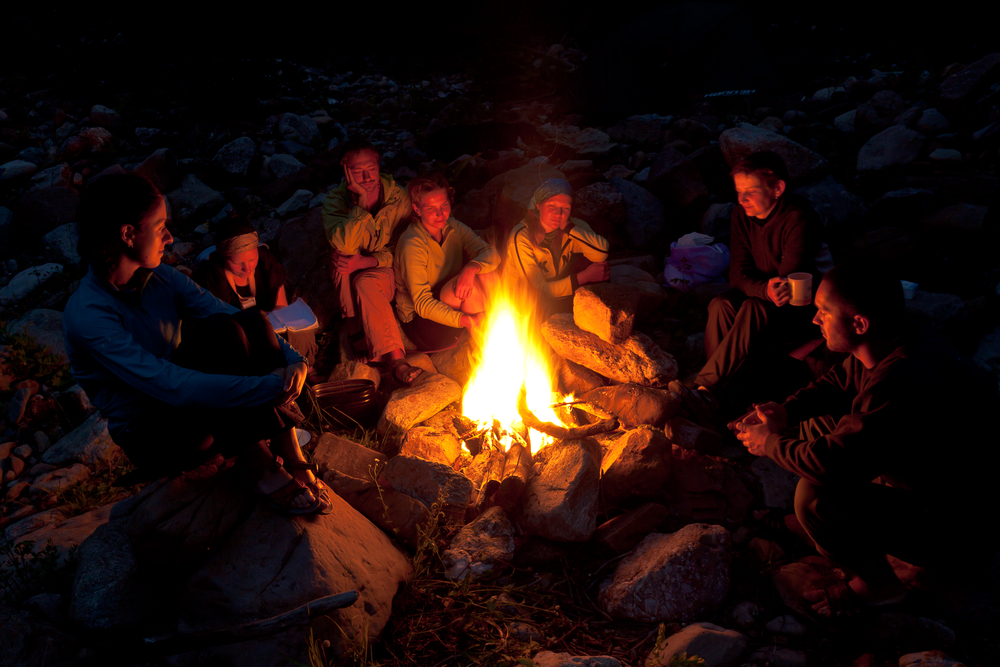 A few weeks ago, internet millionaire Graham Hill wrote an essay for The New York Times about the virtues of “living with less.” Hill explained that he has but a scant six shirts and 10 “shallow bowls” in his 420-square foot New York studio — a lifestyle familiar to many non-millionaires in Manhattan. He raved about how much happier and more simple his life became after he ditched the 3,600-square-foot Seattle residence, the SoHo loft, the turbocharged Volvo, and personal shopper. Thus unencumbered, he traveled the world with Olga, an “Andorran beauty.” His life was full of love and adventure.
A few weeks ago, internet millionaire Graham Hill wrote an essay for The New York Times about the virtues of “living with less.” Hill explained that he has but a scant six shirts and 10 “shallow bowls” in his 420-square foot New York studio — a lifestyle familiar to many non-millionaires in Manhattan. He raved about how much happier and more simple his life became after he ditched the 3,600-square-foot Seattle residence, the SoHo loft, the turbocharged Volvo, and personal shopper. Thus unencumbered, he traveled the world with Olga, an “Andorran beauty.” His life was full of love and adventure.
As Hamilton Nolan wrote at Gawker, “It’s easy not to have material things when you can just buy whatever you need, whenever you need it.” And while Hill tells us that consumerism is “pushing our planet to the brink,” he admits to at least one lingering climate sin — a not-so-little travel habit.
I’m in no position to scold. I was once a frequent flier too. As the daughter of a pilot, I spent the first 30 years of my life jetting around the globe, never stopping to consider the climate consequences of my travel habit. Then, two years ago, I decided to quit cold turkey during an experiment that turned my world inside out.
My pledge was simple: to spend a year staying put. I swore off air travel and drew a 100-mile radius circle around my little farm in western Colorado. For 365 days, I’d live inside this “100-mile habitat.”
For most of Earth’s inhabitants, staying put isn’t a choice, but a simple fact of life. Only about 5 percent of the world’s population has ever boarded an airplane. Still, some of us 5 percenters have come to view globetrotting as our birthright.
The numbers are sobering, however. The German carbon offset group Atmosfair has calculated that if our aim is to limit global warming to 2 degrees C above pre-industrial levels by 2050, the average person on Earth should emit no more than 2.3 metric tons of carbon dioxide annually. Ride your bike to the brew pub all you want, but one round trip from Seattle to New York will set you back 2.3 tons of CO2.
I’d always thought of airline travel as a form of public transportation — like a bus, except bigger. And if you look at aviation only in terms of gross CO2 production, it can certainly seem better than driving an SUV solo cross-country. But calculations that focus only on fuel miss some important science. It turns out that plane emissions exert a particularly large greenhouse effect because they’re injected straight into the upper atmosphere. Scientists call this “radiative forcing,” and according to researchers at Atmosfair, it means that the effects of CO2, contrails, ozone, and other plane emissions drive global warming two to five times more than if calculated based on CO2 alone.
I’m embarrassed to say that until I crunched the numbers, I was oblivious to the destructiveness of my travel habit. I wasn’t alone. Geographer Stewart Barr at Exeter University in the U.K. has studied the habits of people who identify as environmentalists and found that self-proclaimed greens take more frequent and longer flights than people who don’t label themselves enviros. Some of these “bleeding-heart jet setters” swore that they’d earned these flights with their green behaviors at home, even though their air travel obliterated the gains they’d made doing things like recycling and turning down the thermostat.
Faced with these stark realities, I set out to spend a year inside my “100-mile habitat.” Without interruption, I’d tend my heritage chickens, observe the peaches in our orchard slowly ripen in the sun, and watch the grapes in our vineyard develop their enticing colors.
Tough life, right? But it wasn’t without its sacrifices. I’d have access to canyons, rivers, mountains, and wineries, but not a single large city. My plan was met with skepticism from friends who couldn’t imagine a life without motion (“Are you getting paid for this?”) and outright hostility by my mother, who was angry I wouldn’t be coming to visit her in Albuquerque, 350 miles away. I was truly sad not to visit my parents in person, and I certainly missed out on some social and professional opportunities.
Yet I gave up far less than I’d expected. Forcing myself to “make do” with local offerings led me to explore places in my habitat that I’d missed on my way to destinations farther away. I discovered new restaurants, cultural events, and outdoor adventures. I made unexpected friends.
Shrinking my boundaries didn’t feel constricting — it felt liberating. Without travel, my life became calmer and far less stressful. After hundreds of days living in place, I felt truly grounded. It was the best year of my life, and when it was over, I had no desire to leave.
Eventually work obligations drew me out of my habitat, but I went reluctantly. Since then, I’ve traveled again, but not without pondering the selfishness of my actions: I reap the benefits of my travel, while the world’s least fortunate shoulder the bulk of the climate costs.
My carbon footprint is still ridiculously high compared to most of the world’s population, so I have no business preaching. Still, I do have suggestions for anyone looking for a richer, lower-impact life. Make a list of the things you’ve never done, places you’ve never been, and treasures you’ve never sought in your home community. If you’re like me, the number of items will surprise you. Then pledge to spend more time close to home — start with a month or maybe three.
When you do travel, ride your bike or take public transit whenever possible. Drive if you must. And if you absolutely have to fly, buy carbon offsets like Graham Hill does. But understand that you can’t buy a clean conscience. As environmental journalist George Monbiot writes, “There is no way to halt global warming and continue traveling long distances at high speeds.”
Hill is right that reducing your consumption is a good way to start shrinking your impact on the planet. But if you really want a small climate footprint, you’ll need a small habitat too.




